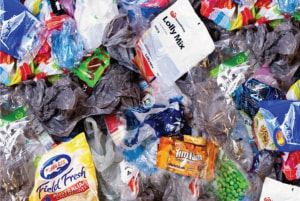Precision is paramount in the world of food and beverage production. In the October/November edition of Food & Drink Business magazine, Mettler Toledo examines a recent study which highlights the need for high-quality calibration buffers in maintaining measurement precision.
For a food or beverage manufacturer, every ingredient, every process, and every measurement counts towards the quality of the final product. One often overlooked aspect of maintaining this precision is the calibration of pH meters – an essential tool in ensuring the acidity or alkalinity of food items is just right. But how accurate are the pH buffers used for calibration?
The Calibration Process
Calibration involves using standard solutions – known as buffers – that have a certified pH value. However, not all buffers are created equal. The study compared buffers from various providers to secondary DKD reference standards. The goal was to determine if these commercially available buffers meet the necessary accuracy standards.
With the widely accepted error margin for pH measurements being ±0.05 pH units, any deviation from the specified uncertainty of the calibration buffers can introduce additional, often unnoticed, errors in subsequent measurements. This can lead to significant repercussions in food quality, affecting everything from flavour to safety.
Rigorous Testing
To assess the accuracy of pH buffers, researchers purchased solutions from seven different providers, including Mettler Toledo, all claiming a certified measurement uncertainty of ±0.02 pH units. These were then compared against secondary DKD reference pH standards (with a measurement uncertainty of ±0.003 pH units) under standardised conditions.
Each buffer was tested multiple times using Mettler Toledo’s SevenExcellence S400 meter and its new InLab Max Pro-ISM sensor, ensuring consistency in measurements. Every variable was controlled – temperature, stirring speed, and even the same operator – providing a robust dataset for analysis.
Surprising Discrepancies
The results were telling. Most buffers aligned closely with the linear regression of DKD reference standards, indicating a satisfactory level of accuracy. However, significant deviations were noted for several providers. Specifically, buffers from providers four, five, and six showed discrepancies up to 10 times the certified error limits, raising red flags about their reliability.
In a world where pH measurements are critical for processes such as fermentation, baking, and preservation, these inaccuracies can lead to flavours that are off or even unsafe food products.
Choose Wisely
The findings from this study serve as a critical reminder for food industry professionals: not all calibration buffers are equal. Relying on low-quality buffers can introduce unacceptable levels of error into pH measurements, impacting the reliability of research, quality control, and production processes.
It is vital to evaluate the quality of the commercial standards you use and ensure they conform to recognised standards like DIN/NIST. As the study concluded, a lack of scrutiny in this area could lead to errors of 0.1-0.2 pH units, significantly altering the conditions of food production.
For a dependable pH analysis, always prioritise high-quality calibration buffers. The integrity of your measurements can mean the difference between a successful batch of product and a costly error.
This article first appeared in the October/November 2024 edition of Food & Drink Business magazine.






